New Products & Services
March 2020
 The InFocus Online Platform uses secure, near-realtime data to optimize plant performance and efficiency, helping users make informed decisions and collaborate more easily. The platform has been tested and piloted with early adopters and has already been fully deployed in multiple facilities. InFocus is offered for two solution areas: the Unit Monitoring tool enables timely technical insights to improve process performance by drawing on this company's technical and operational experience, the monitoring tool provides users with easier access to expertise, early identification of potential operational concerns and in-depth analysis; and the Lube Optimization Model includes lube hydrocracker and dewaxing technology modules, which can be run independently or linked. Each module predicts process performance, product yields and qualities based on key operating variables such as average reactor temperature, space velocity, pressure, product fractionation cut point and separation efficiency. The predictive tool enables users to quickly and cost effectively test the impact of feedstock and operational changes on lube product yields and quality. The tool can also be tuned to match actual unit performance, enabling users to evaluate feed flexibility and optimize product mix. — ExxonMobil Catalysts and Licensing LLC, Houston
The InFocus Online Platform uses secure, near-realtime data to optimize plant performance and efficiency, helping users make informed decisions and collaborate more easily. The platform has been tested and piloted with early adopters and has already been fully deployed in multiple facilities. InFocus is offered for two solution areas: the Unit Monitoring tool enables timely technical insights to improve process performance by drawing on this company's technical and operational experience, the monitoring tool provides users with easier access to expertise, early identification of potential operational concerns and in-depth analysis; and the Lube Optimization Model includes lube hydrocracker and dewaxing technology modules, which can be run independently or linked. Each module predicts process performance, product yields and qualities based on key operating variables such as average reactor temperature, space velocity, pressure, product fractionation cut point and separation efficiency. The predictive tool enables users to quickly and cost effectively test the impact of feedstock and operational changes on lube product yields and quality. The tool can also be tuned to match actual unit performance, enabling users to evaluate feed flexibility and optimize product mix. — ExxonMobil Catalysts and Licensing LLC, Houston
www.exxonmobilchemical.com/en/catalysts-and-technology-licensing

AFT
A new version of this company's hydraulic-flow analysis software, Fathom 11, has been released. Designed for incompressible flow systems to calculate pressure drop and flow distribution in liquid and low-velocity gas piping and ducting systems, Fathom 11 builds on previous versions by handling multiple operating scenarios. This includes comparing input data between multiple scenarios, as well as generating composite pump versus system curves for multiple scenarios. Users also have multi-level undo and redo capabilities within the workspace and can now save 'design alerts' and load from a file. Also, all summary output parameters can now be displayed on a visual report. Furthermore, users can convert intermediate elevations into new pipes and branches. — Applied Flow Technology, Colorado Springs, Colo.
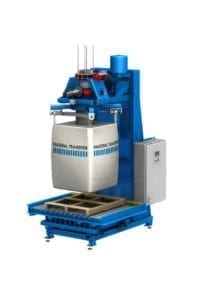
MTS
The Material Master Powerfill Pro bulk-bag filler system (photo) features an exclusive rotating and traversing bag support carriage for maximum filling efficiency and reduced operator fatigue. The bag-support carriage and fill head lower to a programmed operator height, extend towards the operator, then rotate for “reach-free” bag strap and bag spout connection. From the “load position”, an operator can safely connect an empty bag while standing on the floor in front of the filler unit in approximately 20-30 s. Once the bag spout is sealed, the fill carriage returns to the “fill position.” The bulk bag is automatically inflated, filled, densified, and weighed with the push of a button. Once the fill cycle is complete, the bag inlet spout and straps automatically release, the fill head raises, and the filled bag is removed via powered roller conveyor. Units are custom designed and can include powered in-feed and out-feed conveyors, check scales, pallet dispensers, or slip sheet dispensers. — Material Transfer & Storage, Inc., Allegan, Mich.
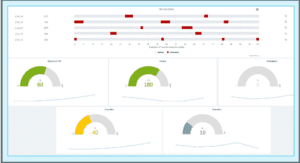
GE Digital
Proficy Operations Hub 1.5 is designed to provide users with a centralized environment that enables greater operational efficiency and collaboration within industrial organizations. Proficy Operations Hub 1.5 allows users to monitor industrial applications under one dashboard, aggregating data and processes for simplified plant operations. The new platform also supports rapid application development with powerful, code-free development tools and rich displays for faster operational response. With Proficy Operations Hub 1.5, users can make decisions based on real-time and historical plant-wide application data collected from tools across an organization’s portfolio of data historians and manufacturing execution systems (MES), independent of location. By centralizing applications under one interface, users can monitor operations, review data and make critical adjustments in real time. — GE Digital, San Ramon, Calif.
Chemtiva is a new digital platform that is designed to help users make informed decisions regarding commercial feasibility, compliance and safety of products. Chemtiva integrates leading scientific and commercial information into a single platform addressing information and data needs and supporting cross-functional collaboration between R&D, scaleup and environmental, health and safety (EHS) functions. Chemtiva utilizes proprietary domain-specific taxonomies, ontologies and data-science technologies to normalize and aggregate critical information from the global scientific literature, toxicological reports and EHS regulations, with market-relevant information, such as global shipments, technical datasheets and industry news, enabling access to over 13 million substances, 7 million products and 17,000 suppliers. Chemtiva aggregates research, toxicology, safety, regulatory, reaction and commercial data from millions of datasets, enabling users to instantly access, visualize and share the data their teams need to drive accurate decision-making throughout the product lifecycle. — Elsevier B.V., Amsterdam, the Netherlands
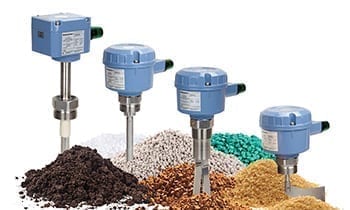
Emerson Automation Solutions
The new range of Rosemount solids level switches (photo) was designed to increase safety and reduce waste by providing reliable point-level monitoring and supporting overfill prevention. The vibrating fork, paddle, capacitance and vibrating-rod switches monitor solid materials, such as powders, grains and pellets, in all silo types. The compact switches require low levels of maintenance and are suitable for operation in extremely challenging environments, including those with high temperatures, high pressures, dust and risk of explosion. The switches can be used to provide standalone point-level monitoring to help optimize filling and emptying cycles. They can also be deployed within an overfill-prevention system. — Emerson Automation Solutions, Austin, Tex.
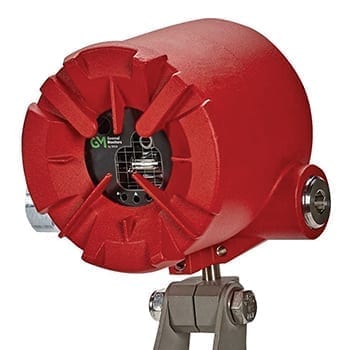
MSA Safety
The FL500-H2 (photo) is an ultraviolet/infrared (UV/IR) flame detector designed specifically to detect hydrogen fires. The FL500-H2 sensors monitor optical radiation emitted by a hydrogen flame in both the UV and IR spectral ranges while simultaneously rejecting nuisance false-alarm sources that are common within industrial job sites. The detector’s flame-sensing technology relies on the UV sensor to provide a quick response (<3 s) and the IR detector monitors radiation emitted by a flame over a wide 130-deg field of view. UV/IR sensor technology offers increased immunity, operates at faster speeds, and is suited for both indoor and outdoor use. The detector’s design features a compact footprint for ease of installation, along with a rugged stainless-steel housing. The easy-to-read display includes three LED indicators that show normal operation, fault condition and an alarm. — MSA Safety, Cranberry Township, Pa.

Smart-Hose Technologies
This company’s Break-Away adapter (photo) is a break-away coupler designed with an engineered break-point to protect plants, tanks, trucks, rail-cars and loading arms from the hazardous consequences of pull-away incidents. The patented design does not restrict flow of product and requires no annual maintenance. The company has also released 2- and 3-in. cryogenic Break-Away hose assemblies. This assembly is designed to protect cryogenic facilities from catastrophic hose failures and pull-away incidents. The Smart-Hose cryogenic hose assembly, a passive safety device, requires no human intervention to activate. — Smart-Hose Technologies, Folcroft, Pa.

Siemens Digital Industries
The Siwarex WP351 (photo) is one of the smallest electronic weighing units available, measuring just 20 mm (width) by 65 mm (height). The device’s 1,000-Hz sampling rate and processing time, combined with a digital output response time of less than 1 ms, guarantee high accuracy and repeatability. This capability is especially advantageous for checking scales and high-performance filling machines, as even within very short weighing times, the dosing devices are optimally controlled. As an integral part of Simatic ET 200SP, Siwarex WP351 can be seamlessly integrated into Simatic and non-Simatic automation systems. The intelligent firmware gives users the ability to control weighing processes directly from the module, thereby reducing the load on the connected programmable logic controller (PLC). — Siemens Digital Industries, Nuremberg, Germany
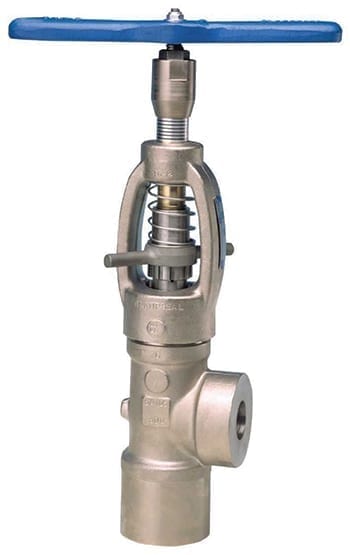
Conval
Clampseal throttling valves (photo) are appropriate for use in severe-service applications that require precise repeatable flow control and dependable shutoff. The valve’s Venturi is an integral part of the removable seat. Both the seat and the stem assembly are easily changed inline should modified flow characteristics be required or replacement necessary due to excessive corrosion or erosion. The orifice is sized to keep fluid velocity across the seat below damaging levels. The exit orifice angle is designed to minimize downstream piping erosion and noise. The pressure-seal bonnet provides ready access for servicing with no welds to cut or seal rings or gaskets to replace. The body-to-bonnet joint integrity is maintained through countless thermal cycles. The durable, single-piece stainless-steel gland contributes to the longevity of the valve. — Conval, Enfield, Conn.
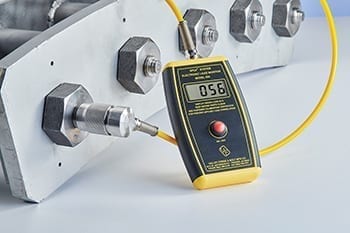
Valley Forge & Bolt Mfg.
Knowing the tension of critical joints is essential to safety, performance and maximizing uptime. SPC4 load-indicating technology (photo) makes it possible to measure the actual tension in a fastener, not just the preload that is being applied by torque or tension tools. By using SPC4 and any one of its specially designed interchangeable readers, technicians can quickly and easily gage tension and even have the option of remotely monitoring fastener tension within SPC4 bolted joints. SPC4 is ASTM F2482 compliant, and accurately measures direct tension in the fastener within±5%. It provides absolute, realtime knowledge of fastener tension and performance — from installation through the full fastener life. SPC4 measures the stretch of the bolt (in other words, the bolt tension), directly from the fastener. Because stretch is the force that creates clamp load, this capability makes SPC4 the most accurate method available to monitor the clamp load of critical joints, says the company. — Valley Forge & Bolt Mfg. Co., Phoenix, Ariz.
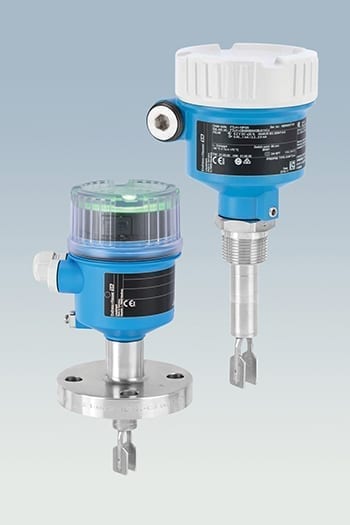
Endress+Hauser Group
The Liquiphant FTL51B and FTL41 vibrating-fork (vibronic) level instruments (photo) were recently launched. The FTL51B features Industry 4.0 and industrial internet of things (IIoT) capabilities, including access via wireless Bluetooth technology, automatic proof tests and verification, and easy commissioning via a mobile device. In addition, operational clarity is provided by a high-visibility LED. The Liquiphant FTL51B can be used in storage tanks, containers and pipes for point-level detection of all types of liquids. The instrument’s vibronic sensor is not affected by changing media properties, flow, turbulence, gas bubbles, foam, vibration or buildup. The instrument works in process temperatures of –58 to 302°F and pressures up to 1,450 psi. It can be used in SIL2 and SIL3 hazardous locations, and has built-in automatic maintenance and verification functions. The general-purpose FTL41 works at lower pressures, up to 580 psi, and with a narrower temperature range of –40 to 302°F. Both perform proof tests, with the FTL51B meeting SIL and WHG (Water Resources Act) requirements. The proof test can be activated remotely at a control system, or locally via a magnet or pushbutton test. The proof test diagnoses the sensor for corrosion and buildup, and ensures that the entire instrument is operating properly. — Endress+Hauser Group, Reinach, Switzerland

R. Stahl
This company has expanded its product range, adding modern explosion-protected lighting systems equipped with Digital Addressable Lighting Interface (DALl; photo). The new EXLUX variants correspond to the DALI standard according to IEC 62386 and are specifically designed for consistent lighting management for general and emergency lighting, even up to Zone 1 explosion protection. As well as safety and emergency lighting, the range includes durable, energy-efficient linear luminaires that can be installed as ceiling, pendant or pole-mounted light fittings. These luminaires, from the EXLUX 6002/4, 6402/4, 6009/4 and 6409/4 ranges, are designed to function for over 100,000 operating hours at a maximum ambient temperature of 60°C. Thanks to the use of bidirectional DALI communication, around 200 programmable commands can be configured, allowing operators to set different intensity values and dimming behavior for individual light fittings or luminaire groups. — R. Stahl, Waldenburg, Germany
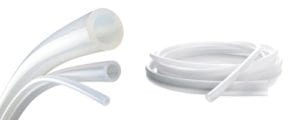
WMFTG
BioPure silicone transfer tubing provides a safe, reliable and value-based solution for a wide range of bioprocess-fluid-transfer applications, including diagnostics, animal health and biopharmaceutical R&D. Constructed of sterile biocompatible materials, the tubing is USP Class VI compliant and free of animal-derived components. Furthermore, tubing is manufactured and packed in an ISO14644-1 Class 7 cleanroom in accordance with EP 3.1.9 and is designed to withstand challenging conditions. BioPure silicone tubing is autoclavable and gamma stable up to 50kGY to meet even the most demanding conditions used in bioprocessing applications. Lot numbering enables product traceability for confidence in the supply chain. — Watson-Marlow Fluid Technology Group, Falmouth, U.K.
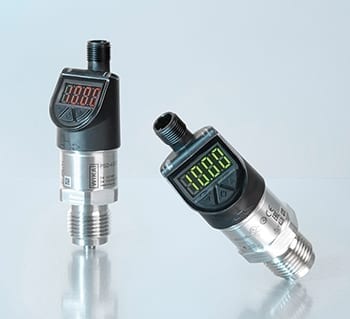
WIKA Alexander Wiegand
The new model PSD-4-ECO programmable pressure switch (photo) enables pressure monitoring in machines. With IO-Link version 1.1, the instrument — in a space-saving design and with a two-color display — is a flexible automation solution. The plug-and-play principle enables the new pressure switch to be commissioned quickly, either through individual factory pre-configuration or via IO-Link. Its display can be set so that the operator receives on-site information without any prior knowledge about the status of the current pressure or the condition of the instrument. For example, a measured value within the defined pressure range is displayed in green, a measured value outside the limit in red. For the best possible view of the display, the case head can be rotated and the display tilted electronically through 180 deg. The pressure switch is designed for medium temperatures between –40 and 125°C and shock resistant up to 50 g. — WIKA Alexander Wiegand SE & Co. KG, Klingenberg, Germany
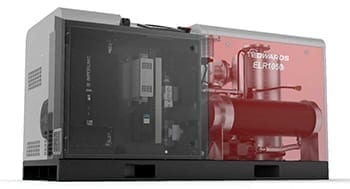
Edwards Vacuum
The ELRi range of liquid ring pumps (photo) is designed for use in applications that are wet, humid and corrosive. The stainless-steel impeller, endplates, liquid reservoir and heat exchanger make this pump highly resilient against corrosion and harsh process gases. The internal injection channels reduce the risk of leakage while the horizontal motor-flange arrangement saves time on maintenance. ELRi pumps are equipped with two variable-speed drives (VSDs). While the main VSD matches the speed of the pump to vacuum level by adjusting its speed, the second VSD regulates the water flow through the centrifugal pump according to the operating conditions to avoid risks of cavitation. A patented algorithm maintains synchronicity between the two VSDs. In addition, pumps are protected against automatic seizure, so pump failure is not a concern after long periods of inactivity. The ELRi series is available with pumping capacity from 750 to 1,050 m3/h. All pumps are also fitted with spray nozzles as standard, which are particularly useful for high-steam-load applications. Moreover, manual and automatic flushing modes allow operation in dirty applications with minimal downtime. — Edwards Vacuum, Burgess Hill, U.K.
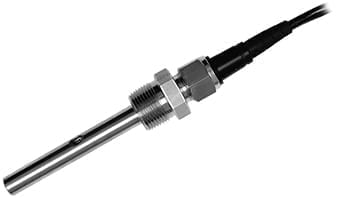
Sensorex
The CS700 stainless-steel conductivity sensor (photo) covers a wide variety of applications, but is particularly effective with ultra-pure water. The sensors offer an adjustable insertion length to fit any installation type. The sensors are constructed of heavy-duty 316 stainless steel and Teflon to enable installation in difficult applications. Sensor accuracy is 2% of reading with 0.1% repeatability when properly calibrated. The sensor’s electro-polish finish promotes stability and consistency. The CS700 withstands temperatures up to 150°C (302°F) and pressures up to 200 psig. — Sensorex, Inc., Garden Grove, Calif.
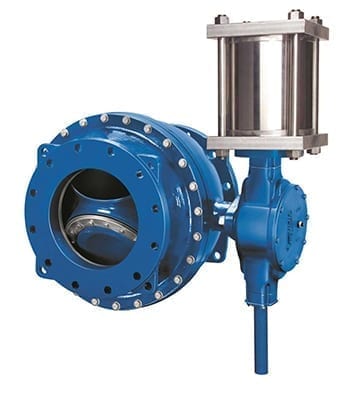
Val-Matic
The Ener•G ball valve (photo) is designed for municipal and industrial water and wastewater applications. The valve is also suitable for various pump-control needs. Valves feature equal-percentage flow characteristics, rugged construction (meeting American Water Works Association standards) and negligible head loss. When fully open, the Ener•G ball valve provides 100% flow area equal to the pipe size and can present significant savings in pumping costs compared to other pump control valves, says the manufacturer. The valve is available with cylinder, electric motor or manual actuation. — Val-Matic Valve & Manufacturing Corp., Elmhurst, Ill.